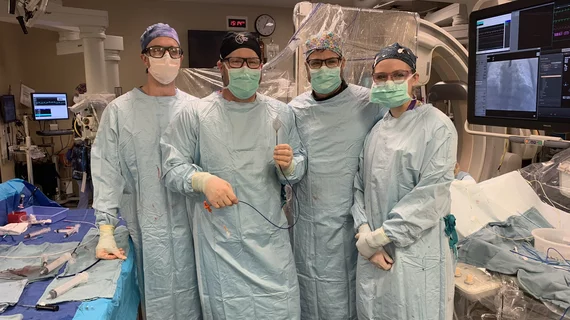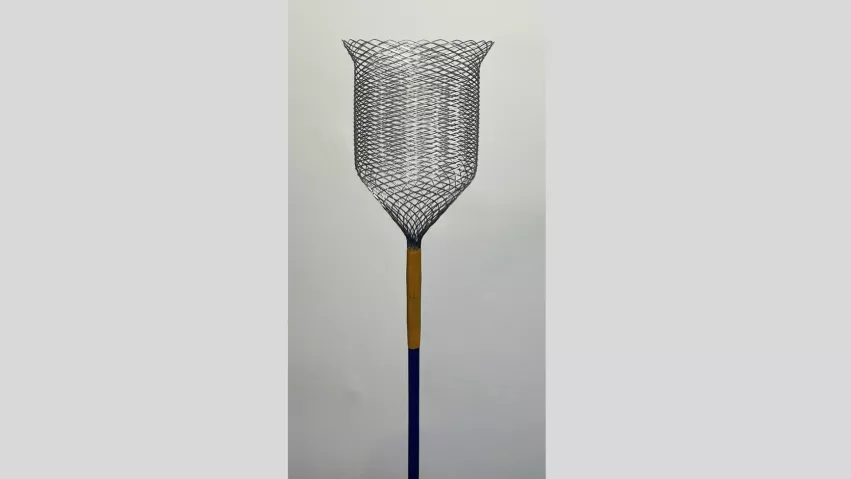Cardiologists make history, becoming first to use FDA-cleared retrieval device to remove a heart tumor
Interventional cardiologists at the University of Washington (UW) have used a new catheter-delivered retrieval device to remove a benign tumor from a patient’s heart. This is the first time such a device has ever been used to remove a heart tumor.
The 30-minute procedure occurred on July 27 at the UW Medicine Heart Institute. The patient, 54-year-old Tim Holland, underwent a liver transplant more than two years ago, when an echocardiogram identified the tumor. Though it was not yet causing issues for Holland, the team at UW decided there was a high enough stroke risk that they needed to act.
James M. McCabe, MD, a professor of medicine at UW and director of the cath lab at UW Medical Center, collaborated on the procedure with Zachary Steinberg, MD, assistant professor of medicine at UW and attending physician at UW Medical Center. In a news statement, McCabe said the procedure “saved Mr. Holland a lot of money and anxiety.”
“He went home the same day,” McCabe added. “We didn't need to put him on a heart-lung machine, and he didn't spend five days in the hospital. And now he is not waiting another two years until his tricuspid valve suddenly stops working.”
More details about the new retrieval device
The catheter-delivered device in question, the ŌNŌ retrieval system, gained FDA clearance in May. It was designed and developed by Ōnocor, a U.S. healthcare startup with roots in the Penn Center for Innovation.
“I’ve watched the scope and complexity of endovascular devices and procedures increase rapidly over the last 20 years and have been struck by the absence of an equal advancement in rescue technologies,” Matthew J. Gillespie, MD, Ōnocor co-founder, said at the time. “The Ōno was invented to help interventionalists ensure the promise of safety that they make to their patients on a daily basis.”
Looking ahead at guidelines for cardiac tumor removal
The UW team emphasized that the ŌNŌ retrieval system still needs to be used more regularly for the removal of cardiac tumors before it can be recommended across the board for this purpose. However, they added, having such a device on hand could make a significant difference in the future.
“We don’t see a lot of people for these tumor, but since they are benign, open-heart surgery might seem (to patients) like a solution that’s more fraught than the problem,” McCabe said in the same statement. “If it becomes clear that this procedure is reproducible and safe and relatively straightforward, then maybe it makes sense to remove the tissue by catheter instead of anxiously waiting for the tumor to grow large enough to create a problem.”


